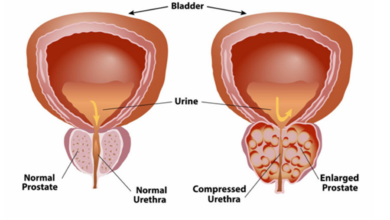Vestibular neuritis, also known as vestibulocochlear neuritis, is a condition affecting the inner ear and leading to severe dizziness and balance problems. Fortunately, vestibular rehabilitation therapy offers a promising solution to manage and mitigate these symptoms. In Edmonton, specialists in vestibular physiotherapy provide tailored treatments that focus on restoring balance and enhancing mobility. Engaging in vestibular physiotherapy in Edmonton can improve the quality of life by diminishing the symptoms and increasing independence for those suffering from vestibular neuritis.
Assessment and Customization of Treatment
Initial Evaluation
A thorough assessment is carried out to find the specific impairments and functional limitations caused by vestibular neuritis. This evaluation typically involves tests for balance, gait analysis, and the extent of dizziness.
Tailored Treatment Plans
Based on the assessment, a personalized vestibular rehabilitation program is developed to address the patient’s unique challenges.
Core Physiotherapy Techniques for Vestibular Neuritis
Habituation Exercises
Habituation exercises are fundamental to vestibular rehabilitation for patients with vestibular neuritis. Through controlled exposure, these exercises aim to decrease the sensitivity to movement that induces dizziness.
Specific Exercises Include:
- Visual Motion Sensitivity Training: The patient may be asked to watch moving objects or visual patterns on a screen to desensitize their system to movements that provoke dizziness.
- Repetitive Head Movements: In a safe, controlled environment, patients perform repetitive head movements that typically trigger their vertigo. This could involve nodding or shaking the head, initially slowly, which gradually increases as the patient’s tolerance improves.
Gaze Stabilization Exercises
Gaze stabilization exercises are critical for improving the coordination between the eyes and the brain, especially when the head is moving. Thus, they help patients maintain focus and visual clarity.
Techniques Employed:
- VOR X1 Exercise: The patient focuses on a single stationary target at eye level. Without moving the target or their shoulders, the patient turns their head from side to side or up and down while keeping their gaze fixed on the target.
- VOR X2 Exercise: This involves the patient focusing on a moving target in the opposite direction to their head. This more advanced exercise is designed to challenge the vestibular system further and improve eye-head coordination.
Regular practice of these exercises helps improve the vestibulo-ocular reflex (VOR), essential for stabilizing vision during head movements.
Balance Training
Balance training exercises are crucial to improving the patient’s overall stability and confidence with vestibular neuritis, diminishing the risk of falls and enhancing mobility.
Static Balance Training:
- Single-Leg Stance: The patient practices standing on one leg, initially with eyes open and, as they progress, with eyes closed.
- Tandem Stance: This is standing with one foot in front of the other to narrow the base of support and challenge balance mechanisms.
Dynamic Balance Training:
- Head Turns While Walking: While walking normally, the patient turns their head left and right periodically. This exercise helps integrate vestibular recovery into everyday activities.
- Obstacle Navigation: Walking around or stepping over obstacles placed randomly along a path. This exercise not only improves balance but also the ability to make quick visual and postural adjustments.
Implementation Tips
These exercises should be performed under the guidance of a trained vestibular rehabilitation therapist to ensure safety and effectiveness. Starting slowly and gradually raising the difficulty of the exercises as the patient’s tolerance improves is key to recovery. Regular assessments by the therapist will help adjust the exercises to match improvements in the patient’s condition and ensure progress in managing the symptoms of vestibular neuritis.
Supportive Strategies
When undergoing vestibular physiotherapy in Edmonton, therapists focus on exercises and emphasize supportive strategies that patients can adopt at home. These strategies are designed to ensure safety, prevent falls, and modify daily activities to accommodate the limitations imposed by vestibular neuritis.
Safety Tips
Safety within the home environment is crucial for individuals experiencing dizziness and balance issues associated with vestibular neuritis.
Fall Prevention:
- Remove Trip Hazards: Ensure that all walkways and spaces, such as loose rugs, electrical cords, and small furniture, are clear of clutter that could cause tripping.
- Improve Lighting: Install adequate lighting throughout the home, especially in stairways and hallways, to help navigate safely even when symptoms of dizziness or imbalance occur.
- Install Safety Features: Consider adding grab bars in the bathroom, non-slip mats in the shower room and bathtubs, and handrails on both sides of stairways to provide support.
Secure Footwear:
- Wear Appropriate Shoes: Encourage wearing shoes with good support and non-slip soles indoors to reduce the risk of slipping and provide better stability.
Activity Modification
Plan Activities Strategically:
- Avoid Rushing: Encourage planning extra time for tasks to avoid the need for sudden movements, which can trigger dizziness.
- Break Tasks into Smaller Steps: Divide activities into manageable parts and take breaks between tasks to manage energy levels and prevent fatigue, which can worsen symptoms.
Adapt Household Tasks:
- Use Sitting Alternatives: For tasks that typically require standing for long periods, such as cooking or ironing, adapt the environment to allow these tasks to be performed while sitting.
- Elevate Work Surfaces: Adjust the height of work areas to avoid bending or looking down frequently, which can trigger dizziness.
Lifestyle Adjustments:
- Limit Head Movements: Teach techniques to minimize head motion during activities that typically involve bending or reaching, such as using a grabber tool to pick things up from the floor.
- Monitor Symptoms: Encourage keeping a diary to record activities that cause or exacerbate symptoms. This can help tailor lifestyle modifications and therapeutic interventions more effectively.
Regaining Balance with Specialized Care
Momentum Physiotherapy offers vestibular neuritis treatment through specialized vestibular physiotherapy in Edmonton. By focusing on personalized vestibular rehabilitation therapy, patients can experience significant improvements in their symptoms. Patients can enhance their confidence in navigating daily activities with the right support and targeted treatments.
If you are looking to overcome the challenges of vestibular neuritis, consider reaching out to Momentum Physiotherapy. Our team of expert therapists in vestibular physiotherapy in Edmonton can help you regain control over your balance and mobility, setting you on a path toward a more stable and active life.









